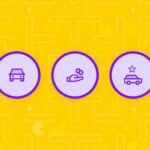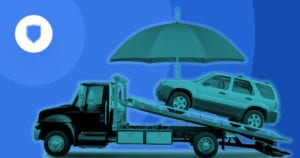
Our lives run on transportation. It gets us to work in the mornings, delivers fresh food to our grocery stores, and encourages us to travel to far corners of our wide world. While we may view transportation as a cumbersome, traditional industry, I challenge you to think back to the world of the late 1800s. I’m sure thousands of people thought the first car was a new-fangled invention that would never take hold in society. The car was revolutionary, as was the truck, train, and airplane. Transportation today allows us to access public transit, shipping, ride-sharing, and an unquantifiable amount of convenience. Cumbersome and traditional? Perhaps at times, but the transportation industry is not known for shying away from innovation and adaptation.
It’s no wonder that the industry has become a hotbed for the Internet of Things. IoT continues to dominate the future of business—the Compound Annual Growth Rate (CAGR) of IoT is estimated at 28.5%, theoretically creating a $457 Bn. industry by 2020. Systems integrators are clearly becoming more crucial as businesses think about expanding into the largely uncharted territory that is IoT.
Experts forecast the transportation industry will spend $40 billion annually on IoT by 2020. What does this mean for us today? It means that we should expect the uptake of IoT technologies to increase dramatically, and IoT applications in transportation will actually be some of the more exciting ones to watch because they’ll change our everyday lives.
As consumers, we will see increased convenience, safety, and commitment to service by businesses within the industry. As business people, we should grasp onto the importance of these technologies early and capitalize as early adopters and trailblazers—specifically, in the smart city space.
IoT Applications in Transportation
Understanding the context of IoT in transportation is of great importance, but what are these technologies going to look like? Where should we expect to find them?
We’ve already started to see the incorporation of IoT in transportation. They can be as small scale as a vehicle-to-person communication (“Your Lyft is two minutes away!”) and as large scale as monitoring shipping logistics of a global company. Let’s discuss IoT applications in transportation that are revolutionizing the industry.
Maintaining Vehicle Health
We all know someone that owns a car and knows nothing about it. It might even be you.
It’s okay—cars are complicated pieces of machinery. There is some basic knowledge that every car owner should have (i.e. how to check tire pressure), but there are many other working pieces that are helpful to keep a car in tip-top condition and out of the shop. These require a more in-depth knowledge of the workings of a car and its components.
Luckily, since 1996, onboard diagnostic ports (OBDs) have been installed in cars to help manufacturers and mechanics glean information about a car’s health. Consumers have access to this information now through devices, such as Automatic’s adapter, which plugs into the OBD port to monitor engine health along with an abundance of other capabilities (like tracking your car to its parking spot.) This makes car maintenance less of a mystery and can save consumers thousands of dollars in vehicle maintenance costs. But there’s no reason to stop there.
This type of technology is very important for businesses working in this industry. Companies with fleets of vehicles spend millions of dollars in extraneous costs when their vehicles suddenly break down in the middle of a route or in the hands of a customer. With IoT, companies can manage the performance of their fleet no matter where they are and catch issues before they occur. Companies can also optimize other factors beyond vehicle health, such as fuel consumption and idle time. This not only helps cut costs for the businesses but also relieves drivers of monotonous (and often error-prone) tasks like manual reporting.
Curbing Traffic
Let’s state the facts: no one enjoys traffic. Besides its ability to cause irritation instantly, traffic wastes millions of gallons of gas and cuts deep into otherwise productive work hours. According to Texas A&M’s 2015 Urban Mobility Scorecard study, American commuters spend on average an extra 42 hours a year sitting in traffic on top of their commute. In highly congested urban areas, that number soars to over 80. IoT, including smart city IoT applications, is poised to address these pain points in transportation.

IoT has a huge opportunity to dissipate this routine (and completely avoidable!) annoyance to society. The futurists who anticipate societies with fully autonomous vehicles will be the first to tell you that self-driving cars are a huge component of the cure to traffic. When a car relies on intelligent sensors to communicate with the cars around it, the flow of traffic will be more constant rather than stop-and-go due to a few bad drivers.

Before this fully autonomous future occurs, we can use IoT to enable smarter route mapping to avoid congestion. Waze jumped onto this business opportunity years ago by allowing drivers and passengers to share information about their route with other drivers. With more sensor- and camera-enabled vehicles on the road, there is ample opportunity for businesses and transportation authorities to create systems that optimize routes in real-time without relying on input from humans.
Car manufacturers diving into IoT as well. They’re building technology into their cars to ease the stress that traffic places on drivers. Ford has a well-known technology called Traffic Jam Assist: a mode that allows the car to match the speed of the car ahead of it in congestion. Not only does that kind of speed matching ease drivers’ moods; it also actually smoothes out traffic flows and decreases congestion patterns. Other carmakers have followed suit, demonstrating the importance of carmakers’ willingness to adopt IoT-enabled technologies into their businesses proactively.
Transforming the Meaning of Vehicle Ownership
One of the more interesting future applications of IoT in transportation is around vehicle ownership. According to a recent study completed by Tony Seba and James Arbib, car ownership will decrease by 80 percent by 2030. You can see it happening already. Urban dwellers are selling—or never purchasing—cars. They’re opting to use ride and vehicle sharing platforms like Uber and Lyft in addition to relying on steadily improving public transportation services.
Ride-sharing is becoming cost-competitive with the aggregate cost of car ownership (titling, insurance, maintenance, gas, and more). One day soon such post-ownership transportation models might tip the scales for good.
With a higher number of companies turning to IoT, these platforms will continue to expand, multiply, and get cheaper, driving down the demand for car ownership. So how do these companies employ IoT? A vehicle must be tracked, no matter the location, and broadcasted through a platform for users to find and utilize it.
Mercedes’ parent company jumped onboard by purchasing a majority stake in Car2Go—a car-sharing program that allows users to unlock a vehicle of their fleet with their phone and drive it anywhere within certain boundaries. A number of other factors need to be tracked such as fuel levels and battery health, which ties back into (previously discussed) IoT-enabled fleet management. These systems cannot work without IoT and will increasingly become smarter and more widespread as other stakeholders enter the game.

Now, remember: this is not just for cars. With bikes and electric scooters entering the play in recent years with companies like Bird and Lime, there are a number of different ways companies can capitalize on vehicle and ride-sharing and expand their IoT business while simultaneously benefiting citizens and governments.
Improving Fleet Logistics
Fleet managers do more than simply manage vehicles. IoT can help them go the extra mile. Multiple IoT technologies can be employed to track shipments, optimize delivery and shipping routes, cut costs associated with inefficiencies in logistics, and improve bottom lines. Incorporating data from weather advisories and road closure memos can help operations run smoothly. It could also inform stakeholders of the status of operations in real-time—a huge win in an era where instant gratification reigns supreme.
Conclusion
Transportation is beginning to rely more heavily on IoT. The applications run far beyond the ones listed above. Any company working within the industry will soon learn—if they haven’t already—that incorporating IoT into their business is the best way to beat the competition and future-proof the company.





 Related Podcast Episode
Related Podcast Episode




 Related Applications
Related Applications



 Latest IoT News
Latest IoT News







